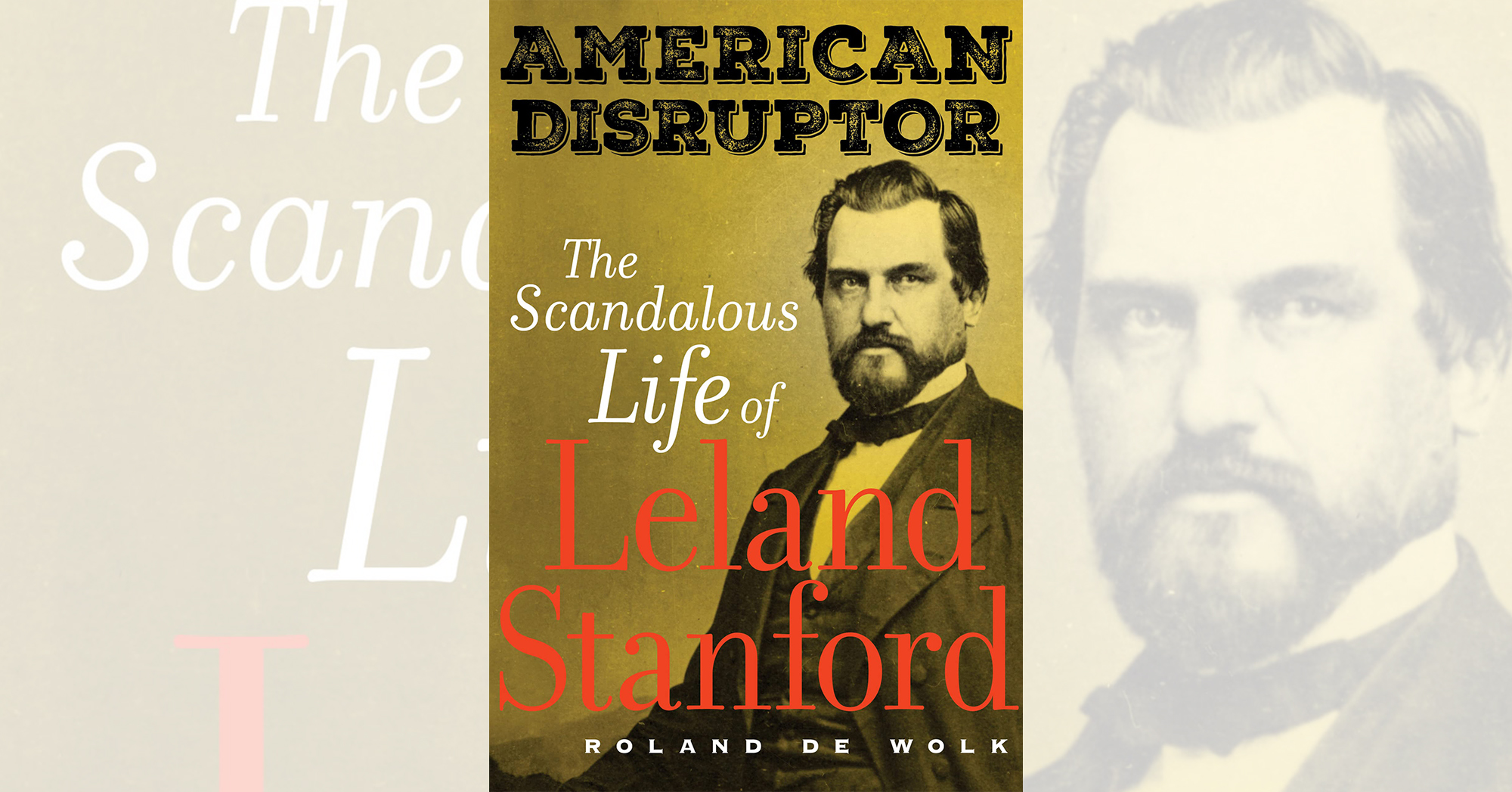American Disruptor: The Scandalous Life of Leland Stanford, by Roland De Wolk, University of California Press, Oakland, 2019, $34.95
Leland Stanford was the best known of the “Big Four” Central Pacific Railroad tycoons (the others being Collis Potter Huntington, Mark Hopkins and Charles Crooker), in part because Stanford was a prominent politician (including a onetime governor of California and a U.S. senator from that state), but mostly because he and wife Jane (“Jennie”) founded Stanford University as an extravagant memorial to their only child, Leland Stanford Jr., who died of typhoid as a teen. The Big Four were the movers behind the biggest enterprise in 19th-century North America, namely construction of the first transcontinental railroad, and more railroads and other business ventures followed. As the shrewd quartet largely used public money to back their private ventures, they received plenty of flak in their lifetimes, notably from crusading journalist Ambrose Bierce, who dubbed them the “railrogues.”
Stanford rose from humble beginnings (born in 1824 in a backwoods tavern in upstate New York) and suffered many failures and disappointments (in New York and Wisconsin) before going to California, where he became a late-blooming success. His life was one of great risk and great reward (Leland and Jennie’s ostentatious displays and lavish personal spending even came to alarm his railroad baron partners). “In extraordinary but largely overlooked actions,” writes investigative journalist Roland De Wolk, “[Stanford] fully exploited the positions of governor and, to a lesser extent, U.S. senator to get what today would be billions of taxpayer dollars to make fortunes for himself and his notorious small band of business partners.”
The author considers Stanford “a largely misunderstood and forgotten man,” which is arguable. For one he remains a household name, and most people correctly perceive him as an ambitious and fiercely persistent individual willing to do anything it took (from corrupt and shady dealings to reassessing the value of the Chinese immigrants he needed to build the Central Pacific) for his own benefit. Stanford’s warts have long been on display, and De Wolk (see Interview) doesn’t avoid them, but the details the author has unearthed reveal a far more complex figure, one who clearly loved his wife and son. The author sums him up as an ordinary man who found himself in extraordinary circumstances and contends that history “shows that the business Stanford pioneered was the foundation not only for Silicon Valley but also for the modern corporation itself.” While the latter point is also arguable, Stanford almost certainly was the key player in developing the rail network that made possible widespread industrialization. De Wolk also reveals much about Jennie Stanford, who was left in financial straits after her 1893 husband’s death but managed to save their namesake university—and make her own share of enemies—before her unsolved murder by poisoning in 1905.
—Editor
This post contains affiliate links. If you buy something through our site, we might earn a commission.





